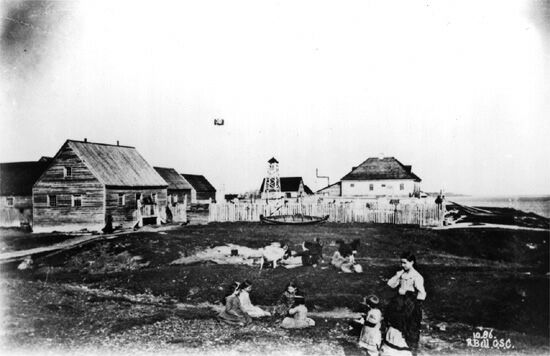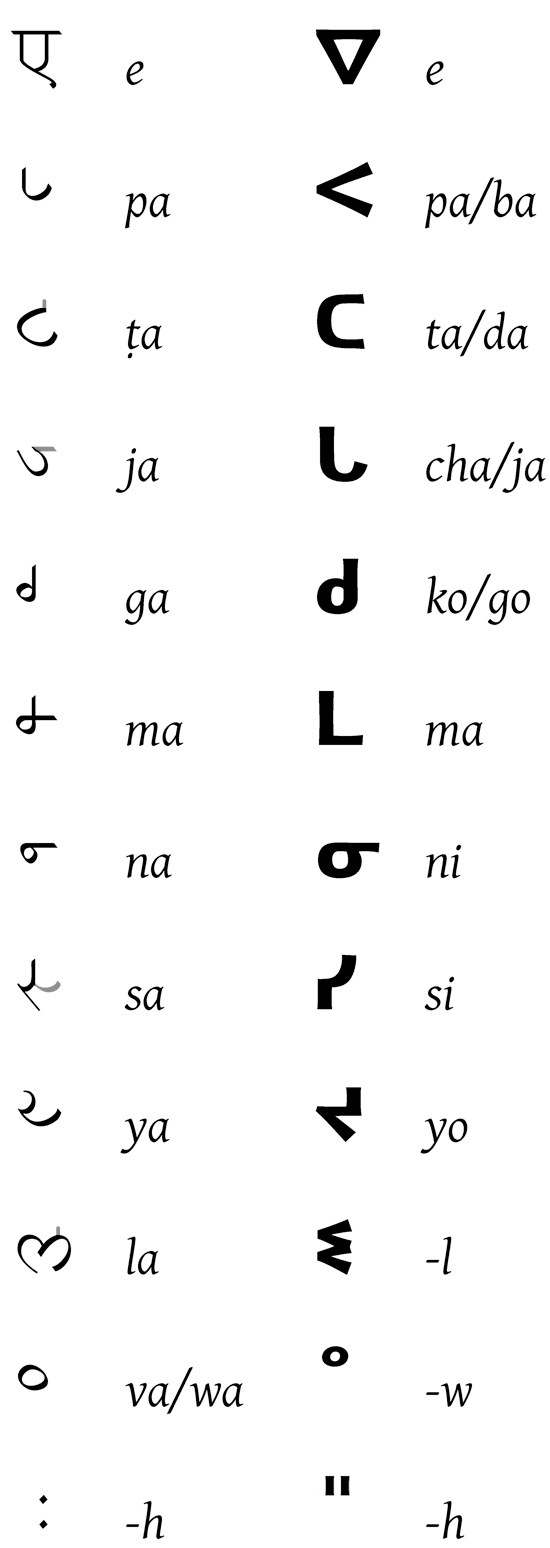|
Moose Cree Language
Moose Cree is a dialect of the Cree language spoken mainly in Moose Factory, Ontario. Classification As a dialect of the Cree language, Moose Cree is classified under the Algonquian branch of the Algic language family. Name The term ''Moose Cree'' is derived either from the toponym , meaning 'Moose Island' or , meaning 'Moose River'. The former is the historical name for the summering grounds of the speakers of this dialect, but has been appropriated by the modern municipality of Moosonee, leaving the island with the official English name of Moose Factory, a name that recalls the historical presence of a Hudson's Bay trading post, originally called 'factories'. The above-mentioned hydronym refers to the river where the said island is located.Kevin Brousseau, 2015. ''A Dictionary of Moose Cree. '' 2nd edition. Moose Factory: Moose Cree First Nation. Speakers of the dialect refer to the language as . Official status In Ontario, the Cree language has no official status. ... [...More Info...] [...Related Items...] OR: [Wikipedia] [Google] [Baidu] |
Canada
Canada is a country in North America. Its ten provinces and three territories extend from the Atlantic Ocean to the Pacific Ocean and northward into the Arctic Ocean, covering over , making it the world's second-largest country by total area. Its southern and western border with the United States, stretching , is the world's longest binational land border. Canada's capital is Ottawa, and its three largest metropolitan areas are Toronto, Montreal, and Vancouver. Indigenous peoples have continuously inhabited what is now Canada for thousands of years. Beginning in the 16th century, British and French expeditions explored and later settled along the Atlantic coast. As a consequence of various armed conflicts, France ceded nearly all of its colonies in North America in 1763. In 1867, with the union of three British North American colonies through Confederation, Canada was formed as a federal dominion of four provinces. This began an accretion of provinces an ... [...More Info...] [...Related Items...] OR: [Wikipedia] [Google] [Baidu] |
Moose Factory
Moose Factory is a community in the Cochrane District, Ontario, Canada. It is located on Moose Factory Island, near the mouth of the Moose River, which is at the southern end of James Bay. It was the first English-speaking settlement in lands now making up Ontario and the second Hudson's Bay Company post to be set up in North America after Fort Rupert. On the mainland, across the Moose River, is the nearby community of Moosonee, which is accessible by water taxi in the summer, ice road in the winter, and chartered helicopter in the off-season (break-up or freeze-up). A private company also offers freighter-canoe ferry service across the Moose River. As of 2020, the MV Niska 1 ferry was operating between Moosonee and Moose Factory, carrying passengers and vehicles. The settlement is mainly inhabited by the Cree, but the hospital that provides healthcare services to the people of the island and surrounding area (collectively known as the Weeneebayko Area Health Authority) employs ... [...More Info...] [...Related Items...] OR: [Wikipedia] [Google] [Baidu] |
Central Algonquian Languages
The Central Algonquian languages are commonly grouped together as a subgroup of the larger Algonquian family, itself a member of the Algic family. Though the grouping is often encountered in the literature, it is an areal grouping, not a genetic grouping. In other words, the languages are grouped together because they were spoken near one another, not because they are more closely related to one another than to other Algonquian languages. Within the Algonquian family, only Eastern Algonquian is a valid genealogical group. Within the Central Algonquian grouping, Potawatomi and Chippewa, otherwise known as Ojibwe, are closely related and are generally grouped together as an Ojibwa-Potawatomi sub-branch. "Eastern Great Lakes" was first proposed by Richard Rhodes in 1988, and first discussed by Ives Goddard as "Core Central" in 1994. In Goddard's assessment, he divides the "Core Central" into the Ojibwa-Potawatomi and Miami-Illinois group, and the Sauk-Fox-Kickapoo and Shawnee grou ... [...More Info...] [...Related Items...] OR: [Wikipedia] [Google] [Baidu] |
Fort Albany, Ontario
Fort Albany First Nation ( cr, ᐲᐦᑖᐯᒄ ᐃᓕᓕᐗᒃ pîhtâpek ililiwak, "lagoon Cree") is a Cree First Nation in Cochrane District in Northeastern Ontario, Canada, within the territory covered by Treaty 9. Situated on the southern shore of the Albany River, Fort Albany First Nation is accessible only by air, water, or by winter road. The community is policed by the Nishnawbe-Aski Police Service, an Aboriginal-based service. It shares the Fort Albany 67 Indian Reserve with the Kashechewan First Nation, which officially separated from Fort Albany First Nation in 1977. Fort Albany First Nation controls the Fort Albany Indian Settlement on the south shore of the Albany River, and the Kashechewan First Nation controls the Kashechewan Indian Settlement directly across the river. Fort Albany was established in 1679 as one of the oldest and most important of Hudson's Bay Company posts. It was also involved in Anglo-French tensions leading to the Battle of Fort Albany in 16 ... [...More Info...] [...Related Items...] OR: [Wikipedia] [Google] [Baidu] |
Anglicanism
Anglicanism is a Western Christian tradition that has developed from the practices, liturgy, and identity of the Church of England following the English Reformation, in the context of the Protestant Reformation in Europe. It is one of the largest branches of Christianity, with around 110 million adherents worldwide . Adherents of Anglicanism are called ''Anglicans''; they are also called ''Episcopalians'' in some countries. The majority of Anglicans are members of national or regional ecclesiastical provinces of the international Anglican Communion, which forms the third-largest Christian communion in the world, after the Roman Catholic Church and the Eastern Orthodox Church. These provinces are in full communion with the See of Canterbury and thus with the Archbishop of Canterbury, whom the communion refers to as its '' primus inter pares'' (Latin, 'first among equals'). The Archbishop calls the decennial Lambeth Conference, chairs the meeting of primates, and is the pr ... [...More Info...] [...Related Items...] OR: [Wikipedia] [Google] [Baidu] |
Canadian Aboriginal Syllabics
Canadian syllabic writing, or simply syllabics, is a family of writing systems used in a number of Indigenous Canadian languages of the Algonquian, Inuit, and (formerly) Athabaskan language families. These languages had no formal writing system previously. They are valued for their distinctiveness from the Latin script and for the ease with which literacy can be achieved; indeed, by the late 19th century the Cree had achieved what may have been one of the highest rates of literacy in the world. Syllabics are abugidas, where glyphs represent consonant-vowel pairs. They derive from the work of James Evans. Canadian syllabics are currently used to write all of the Cree languages from Naskapi (spoken in Quebec) to the Rocky Mountains, including Eastern Cree, Woods Cree, Swampy Cree and Plains Cree. They are also used to write Inuktitut in the eastern Canadian Arctic; there they are co-official with the Latin script in the territory of Nunavut. They are used regionally for t ... [...More Info...] [...Related Items...] OR: [Wikipedia] [Google] [Baidu] |
Eastern Cree Syllabics
Eastern Cree syllabics are a variant of Canadian Aboriginal syllabics used to write all the Cree dialects from Moosonee, Ontario to Kawawachikamach on the Quebec–Labrador border in Canada that use syllabics. Cree syllabics uses different glyphs to indicate consonants, and changes the orientation of these glyphs to indicate the vowel that follows it. The basic principles of Canadian syllabic writing are outlined in the article for Canadian Aboriginal syllabics. In this article, Cree words and sounds will transcribed using the ''Standard Roman Orthography''. Inventory The primary difference between eastern and western Cree orthographies is the shape of the final consonants (consonant sounds with no following vowel). Eastern Cree dialects write finals with a superscripted a-syllabic. ᒫᔅᑰᒡ /māskōc/ has two finals, ᔅ /s/ and ᒡ /c/. Other differences are placing the diacritic for labialization (/w/) before rather than after the letter—ᑖᐺ /tāpwē/ (Western ... [...More Info...] [...Related Items...] OR: [Wikipedia] [Google] [Baidu] |
Hydronym
A hydronym (from el, ὕδρω, , "water" and , , "name") is a type of toponym that designates a proper name of a body of water. Hydronyms include the proper names of rivers and streams, lakes and ponds, swamps and marshes, seas and oceans. As a subset of toponymy, a distinctive discipline of ''hydronymy'' (or ''hydronomastics'') studies the proper names of all bodies of water, the origins and meanings of those names, and their development and transmission through history. Classification by water types Within the onomastic classification, main types of hydronyms are (in alphabetical order): * helonyms: proper names of swamps, marshes and bogs, * limnonyms: proper names of lakes and ponds, * oceanonyms: proper names of oceans, * pelagonyms: proper names of seas and maritime bays, * potamonyms: proper names of rivers and streams. Linguistic phenomena Often a given body of water will have several entirely different names given to it by different peoples living along its shor ... [...More Info...] [...Related Items...] OR: [Wikipedia] [Google] [Baidu] |
Hudson's Bay Company
The Hudson's Bay Company (HBC; french: Compagnie de la Baie d'Hudson) is a Canadian retail business group. A fur trading business for much of its existence, HBC now owns and operates retail stores in Canada. The company's namesake business division is Hudson's Bay, commonly referred to as The Bay ( in French). After incorporation by English royal charter in 1670, the company functioned as the ''de facto'' government in parts of North America for nearly 200 years until the HBC sold the land it owned (the entire Hudson Bay drainage basin, known as Rupert's Land) to Canada in 1869 as part of the Deed of Surrender, authorized by the Rupert's Land Act 1868. At its peak, the company controlled the fur trade throughout much of the English- and later British-controlled North America. By the mid-19th century, the company evolved into a mercantile business selling a wide variety of products from furs to fine homeware in a small number of sales shops (as opposed to trading posts) acros ... [...More Info...] [...Related Items...] OR: [Wikipedia] [Google] [Baidu] |
Moosonee
Moosonee () is a town in northern Ontario, Canada, on the Moose River approximately south of James Bay. It is considered to be "the Gateway to the Arctic" and has Ontario's only saltwater port. Nearby on Moose Factory Island is the community of Moose Factory to which it is connected by water taxi in the summer and ice road in the winter. There is no road connection to the community but flights are provided by Air Creebec and by Thunder Airlines. Moosonee is also the railhead of the Ontario Northland Railway where goods are transferred to barges and aircraft for transport to more northerly communities. Moosonee is not particularly far north, being located at 51°N—which is roughly the same latitude as Saskatoon, Calgary, London (UK), and Berlin—but is colder due to its proximity to Hudson Bay, and isolated due to its lack of road access to the rest of Ontario. The community was the site of a fur trading post set up in 1903 by Revillon Frères, competitors to the Hudson's Bay ... [...More Info...] [...Related Items...] OR: [Wikipedia] [Google] [Baidu] |
Algic
The Algic languages (also Algonquian–Wiyot–Yurok or Algonquian–Ritwan) are an indigenous language family of North America. Most Algic languages belong to the Algonquian subfamily, dispersed over a broad area from the Rocky Mountains to Atlantic Canada. The other Algic languages are the Yurok and Wiyot of northwestern California, which, despite their geographic proximity, are not closely related. All these languages descend from Proto-Algic, a second-order proto-language estimated to have been spoken about 7,000 years ago and reconstructed using the reconstructed Proto-Algonquian language and the Wiyot and Yurok languages. History The term ''Algic'' was first coined by Henry Schoolcraft in his ''Algic Researches'', published in 1839. Schoolcraft defined the term as "derived from the words Allegheny and Atlantic, in reference to the indigenous people anciently located in this geographical area." Schoolcraft's terminology was not retained. The peoples he called "Algic" ... [...More Info...] [...Related Items...] OR: [Wikipedia] [Google] [Baidu] |
Max Planck Institute For Evolutionary Anthropology
The Max Planck Institute for Evolutionary Anthropology (german: Max-Planck-Institut für evolutionäre Anthropologie, shortened to MPI EVA) is a research institute based in Leipzig, Germany, that was founded in 1997. It is part of the Max Planck Society network. Well-known scientists currently based at the institute include founding director Svante Pääbo and Johannes Krause (genetics), Christophe Boesch (primatology), Jean-Jacques Hublin (human evolution), Richard McElreath ( evolutionary ecology), and Russell Gray (linguistic and cultural evolution). Departments The institute comprises six departments, several Research Groups, and The Leipzig School of Human Origins. Currently, approximately 375 people are employed at the institute. The former department of Linguistics, which existed from 1998 to 2015, was closed in May 2015, upon the retirement of its director, Bernard Comrie. The former department of Developmental and Comparative Psychology operated from 1998 to 2018 ... [...More Info...] [...Related Items...] OR: [Wikipedia] [Google] [Baidu] |





